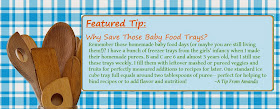Mangos for Max,
A child’s food allergy book by Dr. Jessica St. Louis
Dr. Jessica St. Louis had the idea to
write “Mangos for Max” when her oldest son with multiple food allergies
was entering preschool. She was looking for a book that would introduce food
allergies to preschoolers without overwhelming the young audience; and so
Mangos for Max was written. It introduces food allergies in a way to
teach to others but also benefit the child with food allergies themselves,
including FPIES.
Families living with FPIES have been
recommending this book, and we are honored to have the opportunity to ‘sit
down’ with Dr. St.Louis and let her tell us a little more about her book.
What is “Mangos for Max” about?
Mangos for Max follows the adventures
of Max, a young school-age monkey, as he lives life, makes friends, and eats
mangos instead of bananas due to his allergy. Full of bright and
whimsical illustrations, this book will enchant young readers as they watch
young Max the monkey live it up, make friends, and have lots of fun along the
way. Engaging and informative while remaining silly and playful, this
delightful story has a message young readers will take to heart.
How is “Mangos for Max” different than
other books about food allergies for kids?
I would have to say that "Mangos for Max" is
an optimistic story which focuses on the positive outcome of when all children
stay safe while eating in a group setting. I didn't want my book to focus on
the allergen per se, I wanted the safety issue to be addressed followed by the
story continuing with positive reinforcement. When my oldest son was
entering preschool, I wanted to find a book that I could read to his class that
would describe food allergies without all of the details of what can happen
after food exposure. I felt some stories could be a little overwhelming
for the little ones. So I was on the hunt for a story to gently introduce
the topic of food allergies, which could benefit not only the food allergic
child, but the classmates as well. Since, I couldn’t find exactly what I
wanted to read to a younger audience, I decided to write it myself.
Does the book allow for teaching of
non-IgE allergies?/What do you think would be most beneficial for a child with
FPIES in your book?
I wrote Mangos for Max in a way that it
could include all children. Since most children can relate to
monkeys eating bananas I focused on that particular allergen. I did not
want to pick from the top 8 allergens, as I felt children would fixate on the
fact it was such a common allergen making it less inconclusive. However,
since bananas happen to be a common FPIES trigger, I have heard many responses
saying their FPIES child could relate to this.
How have kids responded to this book?
Have you heard from other FPIES families that found this book helpful?
I
have heard from a lot of different families with food sensitivities,
anaphylaxis, FPIES, and even from children on specific diets due to other
medical conditions outside of allergies. What I have found the most
surprising is the positive response I have received from children who do not
have food allergies. I have met many while doing book readings, as I
usually read to a classroom. Children who have friends with food
allergies can be extremely supportive and I love seeing the enthusiastic
response they have shown.
Dr. Jessica St. Louis is the mother of children with multiple food allergies who enjoys reading to preschools, elementary schools, and small groups to advocate food allergy awareness and education. She lives in Austin, TX with her husband and two boys where they can often be seen enjoying family bicycle rides. For more on Mango’s for Max website.
This post was written by the Executive Board of The FPIES Foundation










